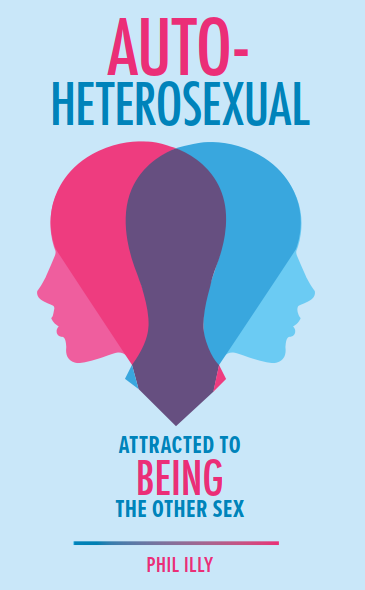Here, in chapter 8.3 of Autoheterosexual: Attracted to Being the Other Sex, I explain how transgenderism research is in a rut because it’s not conducted within a paradigm that corresponds to reality. To remedy this, I advocate for researchers to start grouping research subjects based on their sex and etiology in order to attain findings that pertain to each of these 4 specific groups.
When scientists do research, they operate under a shared intellectual framework. This collection of concepts, past research findings, and theories is known as a paradigm[i].
Scientific paradigms direct research by offering the scientific community a common framework to work within. They make clear which research problems seem to have been solved and which remain.
For example, biologists operate within an evolutionary paradigm that understands biological evolution to be the process that creates and shapes biological life. Particle physicists operate under the Standard Model, which can currently describe all of the elementary particles and three of the four elementary forces.
Science advances in complexity and depth through a series of paradigm revolutions. As the contradictions and inadequacies of one paradigm grow too numerous, the opportunity for a new paradigm to assert its superiority presents itself.
In transgenderism research, the cracks are starting to show. It’s ripe for a paradigm revolution.
Transgenderism researchers currently operate under a gender identity paradigm. In this paradigm, people possess a gender identity. Most people have a gender identity that matches their sex, but some don’t. The ones who don’t are called transgender.
The gender identity paradigm doesn’t sufficiently explain where gender identity and gender dysphoria come from. This glaring shortcoming needs to be addressed.
Scientists working within the gender identity paradigm usually portray transgenderism as some sort of neurological intersex condition in which a person’s brain develops in a way that is more like the other sex in some ways. The resulting conflict between brain and body leads to cross-gender identity and suffering in the form of gender dysphoria. For transgender people of homosexual etiology, there’s some truth to this[ii].
But the gender identity paradigm doesn’t account for the majority of trans people, many of whom have heterosexual relationships, marriages, or children before they come out—some in their thirties, their forties, or even later. Their gender nonconformity is usually not as obvious, so their announcement of a transgender identity often comes as a surprise to friends, family, and acquaintances.
Are we to believe that these markedly different types of gender variance have the same cause and are ultimately the same phenomenon at root?
No, of course not—they’re obviously different.
The Power of Etiological Understanding
The gender identity paradigm doesn’t account for the obvious differences between same-sex-attracted trans people and the rest. If anything, researchers working in that paradigm go out of their way to pretend these differences don’t exist. Its construct of gender identity is somewhat fuzzy, too.
In the gender identity paradigm, gender can be both fluid and a fixed aspect of someone’s psychology—ever-changing, yet also unchangeable. Contradictions abound.
The autoheterosexual explanation offers a way out of these apparent contradictions.
Autoheterosexuality can also be measured more directly than gender identity. There isn’t yet a way to directly measure the gender someone feels themselves to be, but it is possible to measure physical arousal. Sexologists do it all the time.
The two-type model is also more straightforward. Sexual orientations are behind both types of transgenderism. One orientation points toward others of the same sex; the other points toward oneself as the other sex. Although opposites in both gender and direction, these orientations are both associated with gender discomfort and a propensity for sustained cross-gender expression.
The gender identity paradigm lacks this straightforward, elegant symmetry. Its research also continues to produce subpar results. In fact, researchers working within that paradigm who do find patterns may not even notice them.
Recall the massive European longitudinal study that tracked transgender people’s sexual orientation over three years[iii]. Researchers found that neither hormones nor surgeries had an effect on sexual orientation changes, and in their writeup, they gave no clear explanation for these changes.
However, the interpretive lens of the two-type model enabled me to see an obvious pattern in their results. When a large number of trans people started to play a sex role typically associated with their birth sex within their sexual fantasies, same-sex attraction dropped and other-sex attraction went up: meta-attraction was behind the reported shifts in sexual orientation.
Seeing this didn’t require fancy statistics, only a better model.
It’s time for the scientific community to adopt this superior framework for understanding transgenderism.
The old one is obsolete.
It’s Time for a Paradigm Revolution
It’s time to transition to an etiological paradigm of transgenderism.
In this paradigm, there are different causal pathways (etiologies) leading to transgenderism. So far, we know two exist. One is associated with homosexuality and the other with autoheterosexuality.
In this paradigm, the ultimate cause of cross-gender identity and gender dysphoria can be found in either autoheterosexuality or homosexuality.
By independently studying these different types of dysphorias and identities, scientists can better understand the factors that influence the development of gender issues and a desire to transition. There might be more etiologies, but until researchers identify study participants by etiology and group them accordingly, it won’t be possible to discern what these rarer etiologies may be.
Adopting the etiological paradigm is long overdue. It was prematurely discarded for reasons that were political rather than scientific.
It wasn’t debunked, disproven, or falsified.
It remains relevant.
The etiological approach to understanding transgenderism has already produced a fairly solid picture of how autoheterosexual dysphoria and cross-gender identity comes about in males. Building on this foundation, research on female autoheterosexuality could produce knowledge about the similarities and differences in autoheterosexuality between the sexes.
It’s also imperative to directly study autoheterosexuality in a standalone way that’s outside the transgender context. Homosexuality has been studied in this manner, and autoheterosexuality deserves similar consideration.
If autosexual orientations are the mirror image of allosexual orientations, autoheterosexuality research would also deepen our understanding of alloheterosexuality, the most common sexual orientation.
There used to be more research on homosexual dysphoria and cross-gender identity back when most clinicians and researchers considered it to represent true transsexualism, but research on homosexual transgenderism has been scarce in recent years. Both types of transgenderism have been mixed together under the “transgender” label.
Differentiating between these two types in research will be essential for discovering new, actionable knowledge that can help trans people understand themselves and decide how best to navigate their gender feelings.
Researchers have already formally established the superiority of the etiological paradigm for males. They’ve also established the existence of a homosexual etiology for females, but formal research hasn’t yet caught up with the fact that autoandrophilic transgenderism is common among FTMs.
The etiological paradigm of transgenderism is where the next, more advanced stage of transgenderism research will unfold.
By separating participants by etiology and sex, researchers will obtain a more precise idea of what separates people who have severe gender issues from those who don’t—as well as what makes transitioners different from desisters, detransitioners, and those who don’t want to transition.
This more advanced research will discern whether rapid-onset gender dysphoria represents a distinct etiology—and if mental conditions such as autism, schizophrenia, or dissociation can, in rare cases, lead to transgenderism independent of homosexuality or autoheterosexuality.
Further research may find that the two-type model is insufficient and that there are more etiologies of transgenderism. If that happens, the etiological model will need to be updated to incorporate these other etiologies.
Still, the existence of multiple distinct etiologies of transgenderism has long been established. The etiological framework for understanding transgenderism is more accurate and precise than the gender identity paradigm. It’s strictly superior.
Researchers Must Separate by Etiology and Sex
Not separating study participants by etiology damages the ability to generate findings particular to each etiology. This epistemic negligence especially harms trans people of homosexual etiology, as they are dwarfed by the much larger autoheterosexual population.
How can researchers generate findings relevant to trans people of homosexual etiology if they’re mixed in with autoheterosexuals and outnumbered by them? Likewise, how can researchers generate sufficiently precise findings for autoheterosexual trans people if they’re being mixed in with those of homosexual etiology?
It’s important to separate by sex, too. Physical and mental differences between sexes lead to different social realities and psychological tendencies. Sex makes an enormous difference.
With these two etiologies and two sexes, there are four total groups to compare and contrast in order to infer the relative impacts of etiology and sex. By distinguishing between groups of trans people based on their sex and etiology, researchers can arrive at knowledge specific to people in these groups.
These groups arise due to inborn developmental factors that recur across generations, so studies that differentiate between them will have more lasting value (and garner more citations).
It’s time for a paradigm revolution that leaves the gender identity paradigm in the past where it belongs.
It’s time to move forward.
It’s time to use what actually works.
In Sum:
The scientific process is conducted within a shared intellectual framework—a paradigm. This collection of concepts, past research findings, and theories orients research by making clear which research problems seem to have been solved and which remain. As the flaws and inconsistencies in a given paradigm accumulate, it becomes susceptible to paradigm revolution—replacement by a new paradigm that better explains the data.
Most transgenderism research is currently conducted within a gender identity paradigm in which most people have a gender identity corresponding to their sex, but some don’t. The ones who don’t are called transgender.
The gender identity paradigm lacks a coherent, evidence-based explanation that can account for most people who have mismatches of sex and gender. It doesn’t even have an answer for what causes gender dysphoria and cross-gender identity in the first place. Researchers in this paradigm sometimes suggest that trans people’s brains have some sort of cross-sex shift, but this mainly applies to homosexual trans people.
In the etiological paradigm, there are distinct types of transgenderism with distinct causes known as etiologies. Both known etiologies—homosexual and autoheterosexual—account for virtually all cases of transgenderism. These atypical gender-based sexual orientations are opposites in both gender and direction, but they can both culminate in gender dysphoria, cross-gender identity, and gender transition.
Transgenderism researchers need to start separating by etiology because the two etiologies are fundamentally different psychological, social, and sexual situations. It’s important to separate by sex as well, because females and males have large differences in mental and physical traits that lead to significantly different social realities and life experiences.
By separating participants into four groups according to etiology and sex, researchers will generate knowledge that has a much higher chance of being relevant to the people in these groups. They will also form a more precise idea of the other factors that separate people who have severe gender issues from those that don’t—as well as what differentiates transitioners from desisters, detransitioners, and those who choose not to transition.
Speak With Me
Are you an autosexual person who wants to discuss your experiences with someone who actually understands what it’s like? Are you in a relationship with an autosexual person and want to understand them better? Sign up to speak with me! I’m available to speak via Zoom or phone.
[i] Kuhn and Hawkins, “The Structure of Scientific Revolutions.”
[ii] Guillamon, Junque, and Gómez-Gil, “A Review of the Status of Brain Structure Research in Transsexualism.”
[iii] Defreyne et al., “Sexual Orientation in Transgender Individuals,” November 2021.





